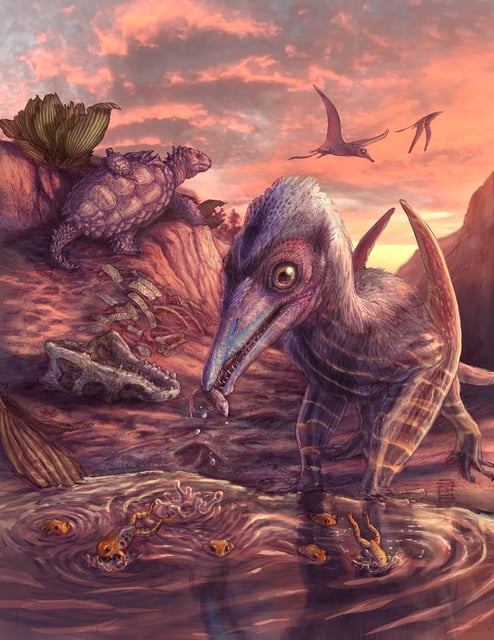Overview
- The PFV 393 bonebed in Arizona’s Petrified Forest National Park, discovered in 2011, yielded the new pterosaur alongside more than 1,200 fossils from 16 vertebrate groups.
- Eotephradactylus mcintireae is named in honor of FossiLab volunteer Suzanne McIntire, who first recognized the intact, tooth-bearing jawbone.
- Radiometric dating of volcanic ash in the Owl Rock Member precisely places the specimen in the late Triassic, filling a key 7–13 million-year gap before the end-Triassic extinction.
- Analysis of its varied tooth morphology and distinctive wear patterns indicates a specialized diet of hard-scaled fish in river-channel habitats.
- Ongoing study of the remaining PFV 393 material aims to deepen insight into late Triassic faunal diversity and ecosystem dynamics.
